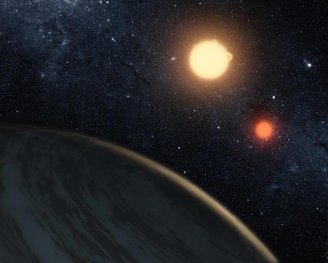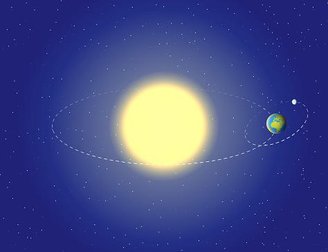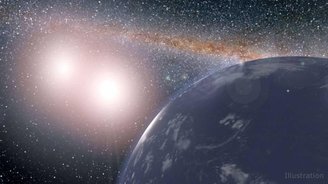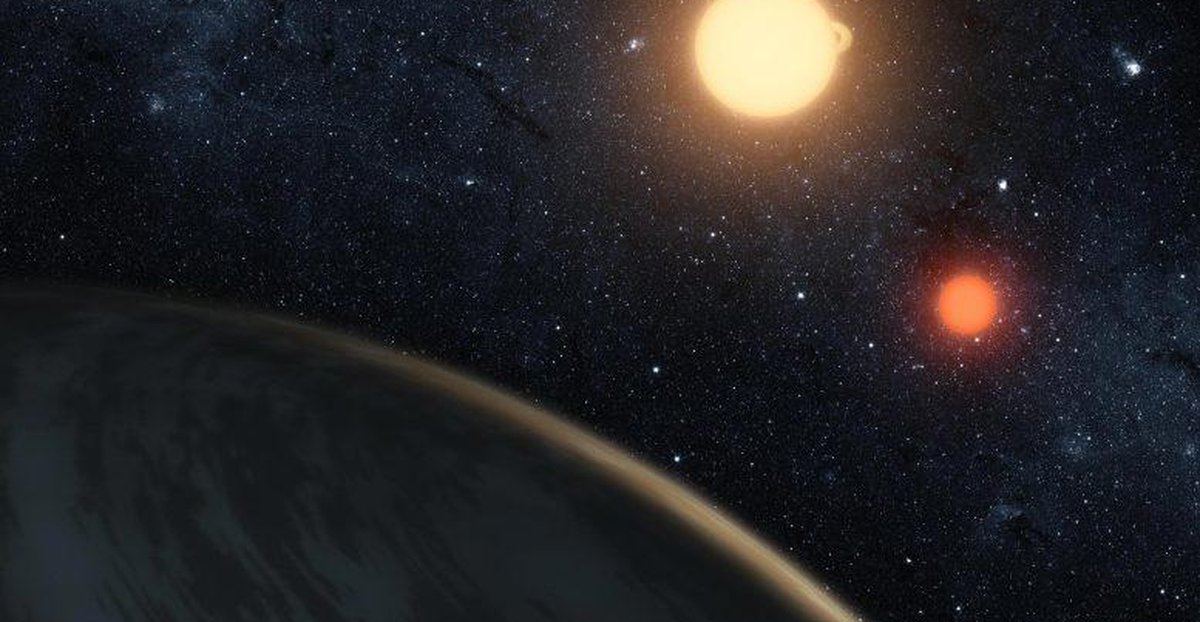Amongst all the things that seem to come only from the universe of science fiction, A planet orbiting two stars is definitely not one of them.
But this was a purely theoretical possibility for quite some time, until in recent years astronomers have found about a dozen confirmed cases of so-called binary planets: Planets orbiting a binary star system.
One of the most notable planets in this category was discovered less than 10 years ago, when NASA launched the Kepler probe, whose primary purpose was to explore the Sun’s stellar neighborhood in the Milky Way and find exoplanets.
Thanks to this mission, 5 years after its launch in 2016, astronomers discovered: Kepler-1647 b is a Jupiter-sized gas planet that has been orbiting a binary star system for about three yearsKepler-1647 b is located in the habitable zone of its system, the region around stars where life could potentially exist.
Based on discoveries made with data from the Kepler spacecraft, astronomers have been able to estimate that close to half of the stars in our galaxy are part of binary star systems. This means that the ability to form planets around binary star systems should not only be possible, but also relatively common in the Cosmos.
What would Earth be like if it were such a planet?
Let’s consider a simple scenario. Suppose we replace the Sun with two nearby stars, each half as bright as the Sun. In that case, the amount of energy reaching Earth would still be the same, and life would be possible there. Such equal-mass binaries are not uncommon, So this is a very plausible scenario from a scientific perspective.

Each of our new suns (Sun 1 and Sun 2) will have a mass of about 85% of the mass of our current Sun.This is because a star’s brightness is extremely sensitive to its mass.Doubling the mass of a star increases its luminosity by a factor of 16, so a 15% decrease in mass is enough to halve the luminosity of a star.
The combined mass of Sun 1 and Sun 2 would be 1.7 times the mass of our current sun. Because the combined gravity would be stronger, the length of a year on Earth would be shorter, only around 280 days.
In order for the Earth’s orbit to remain stable around two stars instead of one in its new configuration, the distance to our planet must be at least four times the distance between the two stars. In other words, in order for the distances of all the planets in the Solar System to maintain their current values, the distance between Sol 1 and Sol 2 must be less than 15 million kilometers.

But to be safe, let’s put the stars closer together: about 5 million kilometers apart. In that case, our suns would orbit each other about once every 10 days.
Each will rotate with a 10-day period, making them slightly more active than our current sun, but not as dramatically so as Kepler-1647 b’s own parent binary system.
At this distance, as seen from Earth, the two suns would likely appear to orbit roughly side by side, leading to a strange new phenomenon: the eclipse of the sun by another sun!

Due to the 10-day orbit, Sol 1 and Sol 2 would pass in front of each other every 5 days. The eclipses would last about 6 hours and at their peaks This would reduce the amount of energy reaching Earth by about 35%, depending on their relative position between them..
The eclipse days may be cold, but the periods of reduced sunlight will be short enough to fit seamlessly into Earth’s general climate.
And double suns wouldn’t look so strange in the sky. At maximum separation, Sun 1 and Sun 2 would be only 2 degrees apart in the sky, just enough to give the shadows a double edge. Sunsets and sunrises would be beautiful sights, slightly different each day.
In short, it would be fine if Earth orbited a binary star instead of our single sun, and under the conditions presented here, it would not be as significant a difference as we think.
But it is enough to know this: Could life have arisen on a planet like ours in an initially binary system?
Source: Tec Mundo
I’m Blaine Morgan, an experienced journalist and writer with over 8 years of experience in the tech industry. My expertise lies in writing about technology news and trends, covering everything from cutting-edge gadgets to emerging software developments. I’ve written for several leading publications including Gadget Onus where I am an author.












